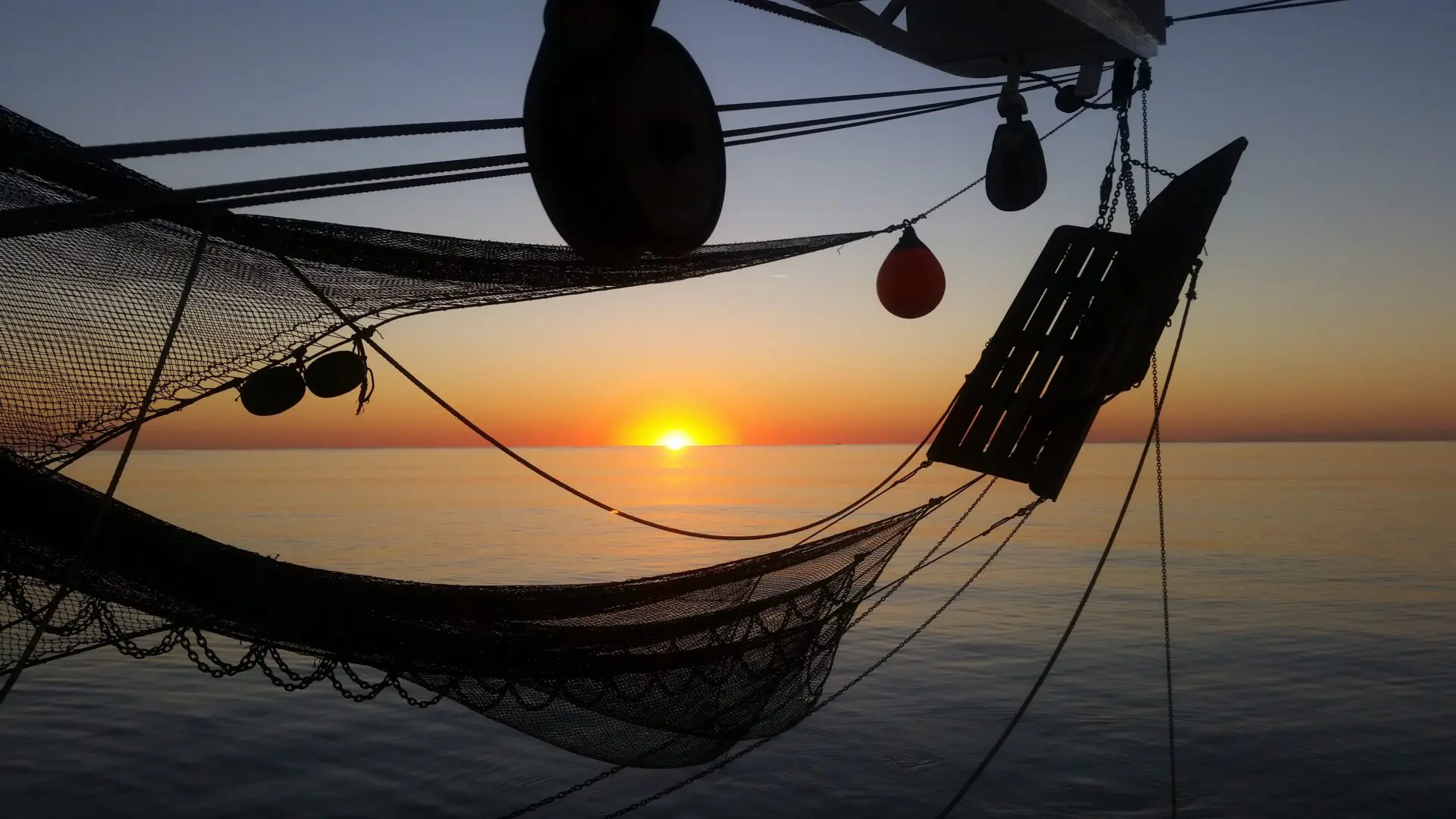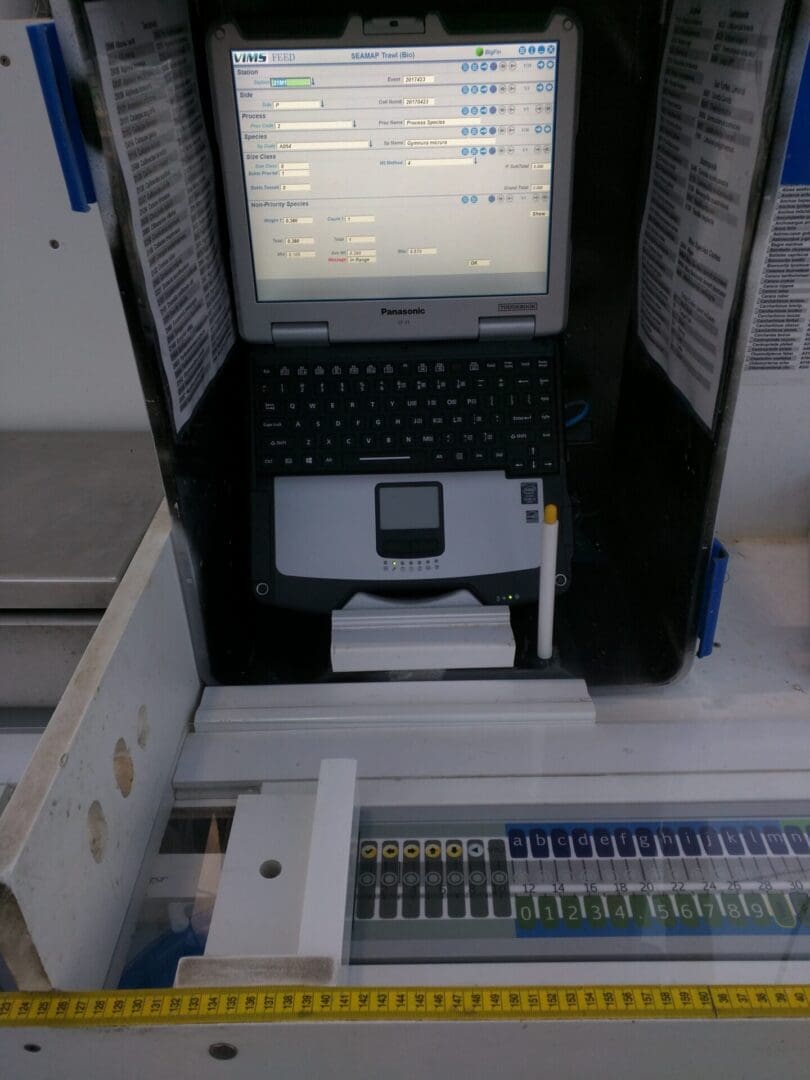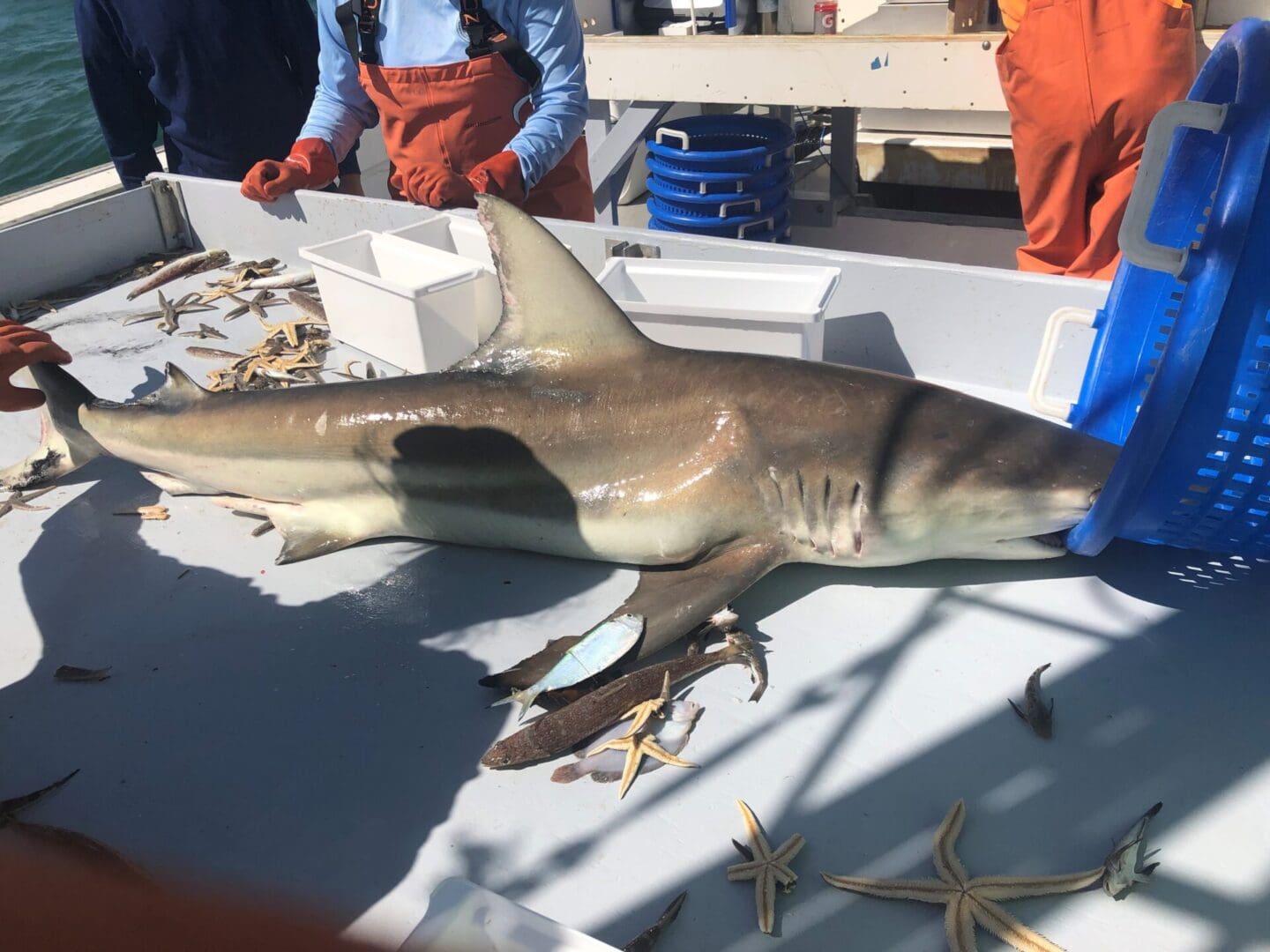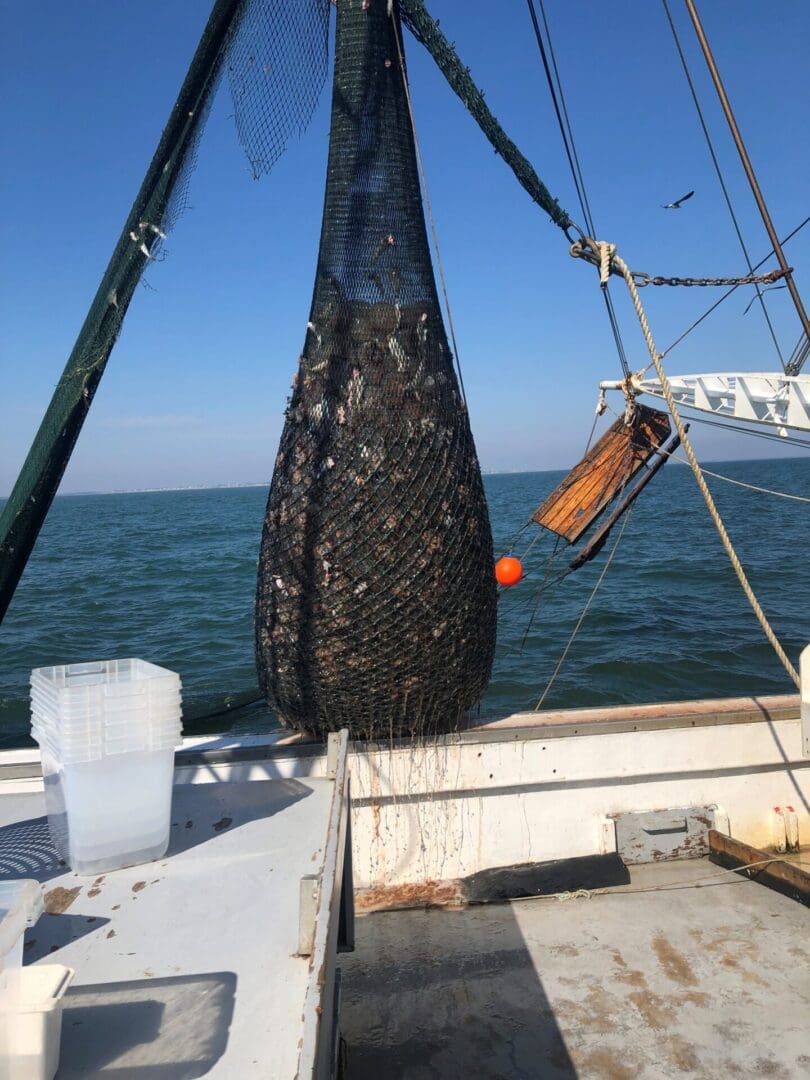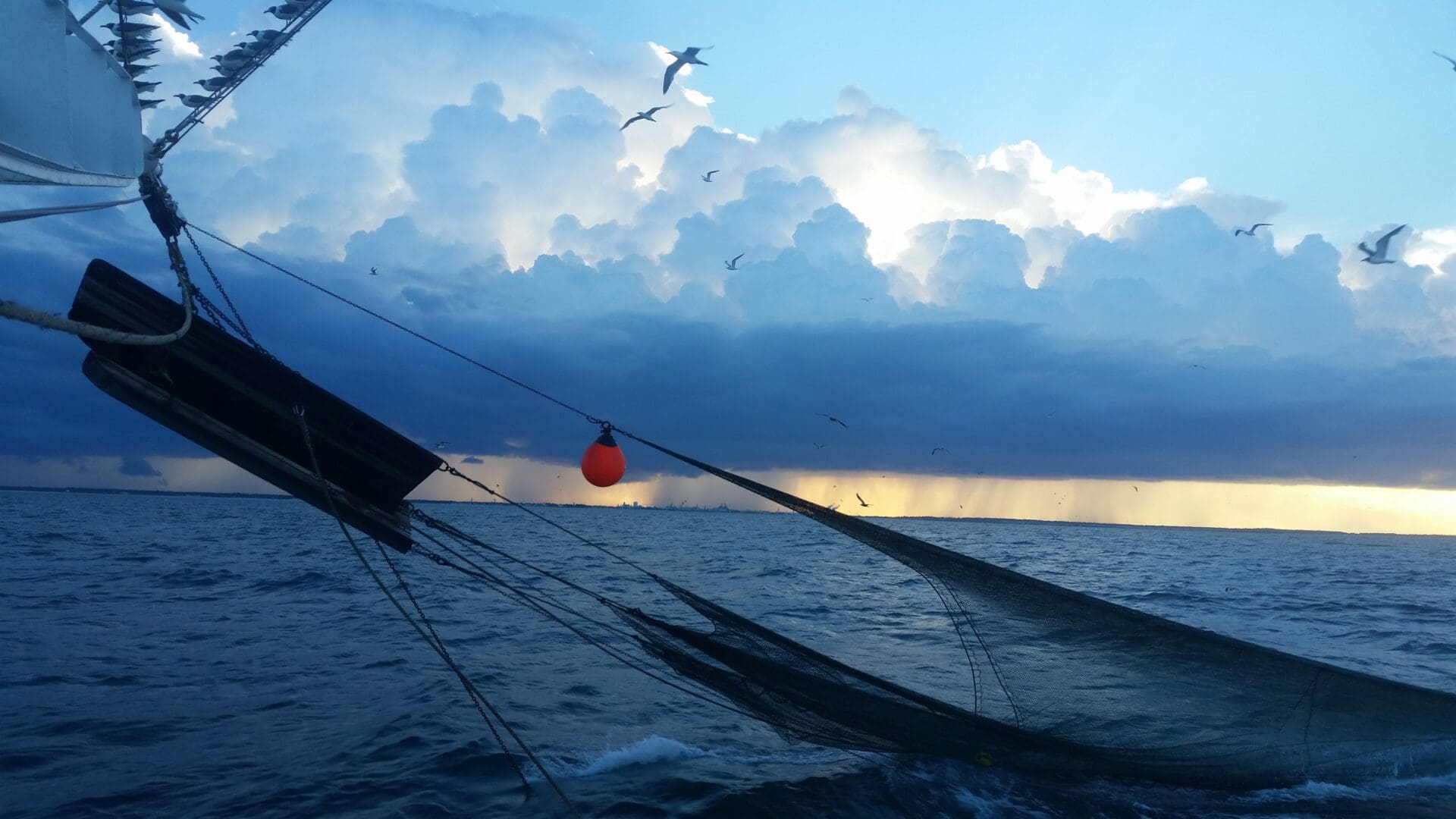Survey Design
Background
The pilot phase of the CTS was initiated in 1986. Using a stratified random sampling design, participating states (North Carolina, South Carolina, and Georgia) conducted daylight sampling in their respective waters in November and December using 30 ft (9.1) high-rise trawls. Sampling occurred at three to five randomly chosen sampling sites within each of 19 strata (North Carolina=7, South Carolina=7, Georgia=5). Beginning in 1987, the SCDNR took over all sampling from Cape Hatteras, North Carolina to Cumberland Island, Georgia. Using a fixed-station sampling design, four sampling locations were subdivided into three trawling sites with each site sampled once during daylight hours and once at night using 75 ft (22.9 m) mongoose-type Falcon trawls. Sampling generally occurred monthly (~7 sea days per month). In 1989, sampling moved from monthly sampling to seasonal sampling, but still varied by time of day. Sampling also expanded to central Florida during this time. Starting in Summer, 1989, the CTS took on the vast majority of standardized characteristics utilized through the present (e.g., seasonal sampling; day-time; 75 ft nets; full spatial range).
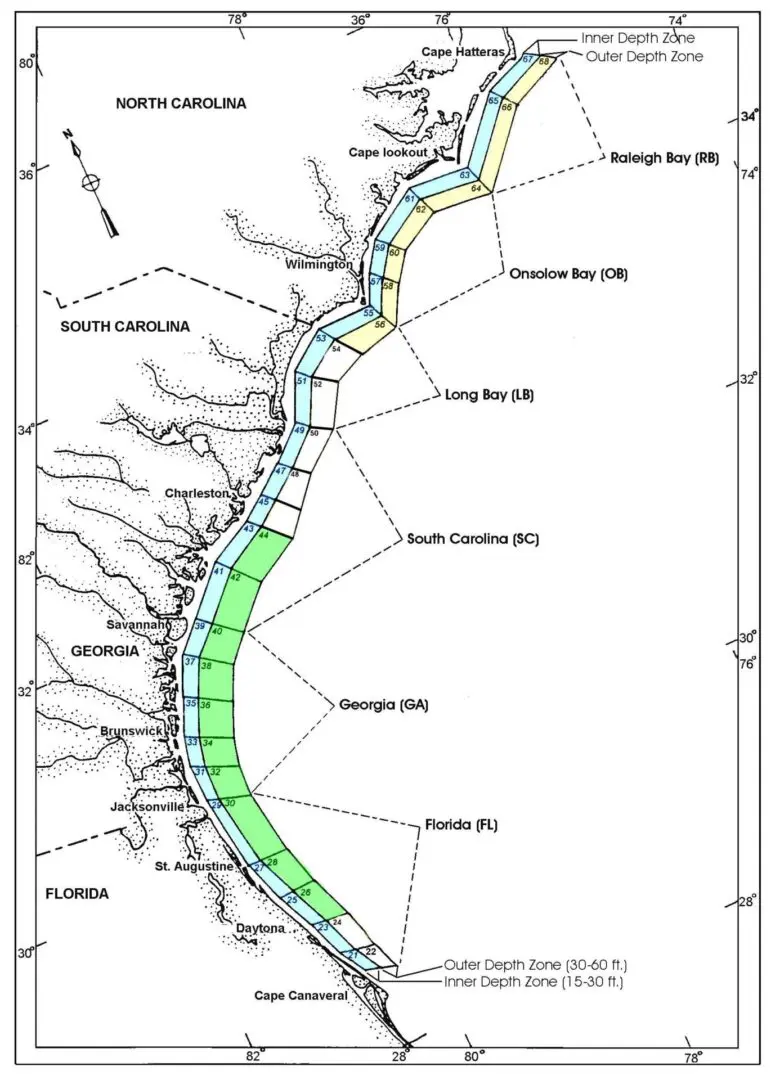
Figure 1. Strata and regions sampled by the SEAMAP-SA Coastal Trawl Survey. Inner (shallow) strata are sampled during all seasons (1990-present). Outer (deep) strata were sampled south in Spring (green) and north in Fall (yellow) from 1990-2000. In 1989, both depth zones were sampled over the entire latitudinal range in Spring and Fall. Strata are not drawn to scale.
Since Summer 1989, sampling has been conducted during daylight hours (between 1 hr after sunrise and 1 hr before sunset). Trawls were towed for 20 min, excluding wire-out and haul-back time, with a target speed of 2.5 kts, relative to ground, and with limited consideration for current direction. Historically, the catch from each net was processed separately and assigned a unique collection number, with data from both nets at each station pooled for analysis to form a standard unit of effort (tow). Beginning in 2021, only the catch from one net was processed with the tail bag of the other net fished untied. Contents of the net(s) were sorted to species (limited exceptions to genus or family only), and total biomass and number of individuals were recorded for all species of finfish, elasmobranchs, decapod and stomatopod crustaceans, cephalopods, sea turtles, xiphosurans, and cannonball jellies (Stomolophus meleagris). For other miscellaneous invertebrates and algae, which were treated as two separate taxonomic groups, only total biomass was recorded. If researchers were unable to identify a specimen, data were recorded and the specimen preserved and transported to the laboratory at SCDNR - MRRI, where it was identified to the lowest taxonomic level practical. When nets contained high volume catches, all endangered species and species that posed a risk to staff during handling (e.g., elasmobranchs, catfish, scorpionfish) were removed and given priority for processing, then the remaining net contents were sub-sampled into shrimp baskets, weighed, and a randomly selected basket(s) was sorted and processed as described above. Abundance and biomass for each species was then expanded to estimate the total abundance and biomass of each species in the full catch using the ratio of the sub-sampled basket weight to the total catch weight.

During LF, individuals of selected priority species either underwent more detailed processing or were flagged for a subsequent Life History work-up (LH; Table 2). LH selected species were designated by the SEAMAP-SA Committee at the beginning of each sampling year based on management needs. For LH finfish, fish selection was based on season, stratum, and 1 cm size bins. LH finfish specimens were measured to the nearest mm (total length, fork length, centerline length, and/or standard length), weighed to the nearest gram, and the sex of each individual was determined based on gross gonad morphology. Sagittal otoliths and, for a subset of designated species, a representative sample of gonadal tissue were preserved and transported to the laboratory at SCDNR - MRRI, where samples were processed following accepted standard procedures (Harris et al., 2004) based on the LH species list each year.
LH data, based on gross field observations only, were also collected from individual specimens of other LH selected species including penaeid shrimp, blue crabs, horseshoe crabs, and all sharks and sea turtles (Table 2). Marine turtles in good condition were released as quickly as possible according to NMFS permitting guidelines, with PIT and flipper tags generally applied if not already present, or numbers logged, if prior tags were in place. If a turtle was sick or injured, the turtle rescue coordinator for the state was contacted and consulted regarding whether the turtle should be transferred to rescue staff to receive additional care, or simply released after further observation.

Hydrographic data, including surface and bottom temperature and salinity measurements, were logged with a Van Dorn water sampler (1990-1992). Subsequently a surface to bottom profile of conductivity, temperature, and depth were logged with a Seabird SBE 19 SeaCAT Profiler CTD (1993-2005, 2017) or a Seabird SBE 19plus SeaCat Profiler CTD (V1 or V2; 2006-present). Additionally, sampling depth (start and end) and an estimate of wave height, as well as atmospheric data on air temperature, barometric pressure, precipitation, wind speed, and wind direction were recorded.
In 2023, the state of South Carolina purchased the R/V Lillian to replace the R/V Lady Lisa. The R/V Lillian is a 95 ft (29 m) steel-hulled trawler that will be retrofitted to meet the needs of the CTS. The R/V Lillian is expected to be operational in 2024.
Full details on survey activities and design changes are present in Table 3.
